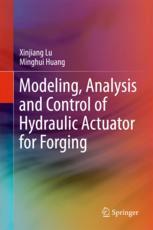

Most ebook files are in PDF format, so you can easily read them using various software such as Foxit Reader or directly on the Google Chrome browser.
Some ebook files are released by publishers in other formats such as .awz, .mobi, .epub, .fb2, etc. You may need to install specific software to read these formats on mobile/PC, such as Calibre.
Please read the tutorial at this link: https://ebookbell.com/faq
We offer FREE conversion to the popular formats you request; however, this may take some time. Therefore, right after payment, please email us, and we will try to provide the service as quickly as possible.
For some exceptional file formats or broken links (if any), please refrain from opening any disputes. Instead, email us first, and we will try to assist within a maximum of 6 hours.
EbookBell Team

0.0
0 reviewsThis book describes load modeling approaches for complex work pieces and batch forgings, and demonstrates analytical modeling and data-driven modeling approaches for known and unknown complex forging processes. It overcomes the current shortcomings of modeling, analysis and control approaches, presenting contributions in three major areas: In the first, several novel modeling approaches are proposed: a process/shape-decomposition modeling method to help estimate the deformation force; an online probabilistic learning machine for the modeling of batch forging processes; and several data-driven identification and modeling approaches for unknown forging processes under different work conditions. The second area develops model-based dynamic analysis methods to derive the conditions of stability and creep. Lastly, several novel intelligent control methods are proposed for complex forging processes.
One of the most serious problems in forging forming involves the inaccurate forging conditions, velocity and position offered by the hydraulic actuator due to the complexity of both the deformation process of the metal work piece and the motion process of the hydraulic actuator. The book summarizes the current weaknesses of modeling, analysis and control approaches. are summarized as follows: a) With the current modeling approaches it is difficult to model complex forging processes with unknown parameters, as they only model the dynamics in local working areas but do not effectively model unknown nonlinear systems across multiple working areas; further, they do not take the batch forging process into account, let alone its distribution modeling. b) All previous dynamic analysis studies simplify the forging system to having a single-frequency pressure fluctuation and neglect the influences of non-linear load force. Further, they fail to take the flow equation in both valves and cylinders into account. c) Conventional control approaches only consider the linear deformation force and pay no attention to sudden changes and the motion synchronization for the multi-cylinder system, making them less effective for complex, nonlinear time-varying forging processes subject to sudden changes.